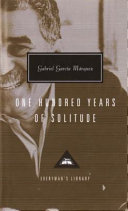
Estimated read time: 4 min read
One Sentence Summary
A young African American man's journey to find his identity in a society filled with racial prejudice and oppression.
Table of Contents
Introduction
"Invisible Man" is a classic novel written by Ralph Ellison, originally published in 1952. The novel has been acclaimed for its exploration of the African American experience, identity, and the struggle for recognition and visibility in a racially divided society. The story is set against the backdrop of early 20th century America, and it delves into the complexities of race, power, and individuality.
Brief Synopsis
Plot Overview and Setting
The novel is set in the United States during the mid-20th century, a time of profound racial segregation and discrimination. The protagonist, who remains unnamed throughout the story, grows up in the South and attends a fictional historically black college. He later moves to Harlem, New York, where he becomes involved with a variety of social and political movements.
Main Characters
| Character | Description |
|---|---|
| The protagonist | A young African American man who grapples with his identity and societal expectations. |
| Mr. Norton | A wealthy white trustee of the college who interacts with the protagonist. |
| Dr. Bledsoe | The college president who plays a significant role in the protagonist's journey. |
| Ras the Exhorter | An influential figure in Harlem's community, advocating for black nationalism. |
Story Points Over Chapters
Chapter 1-5
The protagonist recounts his experiences growing up in the South and his attendance at a black college. He meets Mr. Norton, a wealthy white trustee, and experiences a series of eye-opening events that lead to his expulsion from the college.
Chapter 6-10
The protagonist moves to Harlem and becomes involved with the Brotherhood, a political organization. He witnesses internal power struggles and disillusionment within the group, leading to his eventual disillusionment with their cause.
Chapter 11-15
Ras the Exhorter emerges as a leader in Harlem, advocating for black nationalism and clashing with the Brotherhood. The protagonist becomes increasingly conflicted about his own role in the movement and his personal identity.
Chapter 16-20
The protagonist's internal struggles reach a climax as he grapples with the complexities of race, power, and his own invisibility within society. He experiences a series of betrayals and confrontations, leading to a transformative realization.
Main Events
- The protagonist's encounter with Mr. Norton at the college leads to a chain of events that ultimately results in his expulsion.
- Joining the Brotherhood in Harlem and witnessing the organization's internal power struggles.
- The emergence of Ras the Exhorter as a prominent figure advocating for black nationalism, leading to conflicts with the Brotherhood and the protagonist's own identity crisis.
- The protagonist's confrontations and betrayals, culminating in a transformative realization about his invisibility and societal perceptions.
Themes and Insights
Themes
- Identity: The novel explores the protagonist's journey to establish his identity in a society that seeks to render him invisible.
- Racism and Discrimination: The pervasive nature of racial discrimination and its impact on individual lives and societal structures.
- Power and Control: The dynamics of power and control within social and political movements, as well as individual agency.
Insights
Ellison's narrative offers a profound exploration of the African American experience, shedding light on the complexities of race, identity, and the struggle for visibility in a racially divided society. The novel also delves into the disillusionment and internal conflicts within political movements, as well as the profound impact of societal expectations on individual lives.
Reader's Takeaway
"Invisible Man" offers readers a powerful and thought-provoking exploration of the African American experience, identity, and the struggle for recognition in a racially divided society. The protagonist's journey serves as a poignant reflection of the pervasive nature of racism and the complexities of individual identity. The novel provides valuable insights into the dynamics of power, control, and the impact of societal expectations on individual lives.
Conclusion
Ralph Ellison's "Invisible Man" stands as a timeless literary work that continues to resonate with readers for its compelling exploration of race, identity, and societal invisibility. The novel's enduring themes and profound insights into the human experience make it a significant and impactful contribution to American literature.
Invisible Man FAQ
What is the genre of 'Invisible Man'?
Who is the author of 'Invisible Man'?
What is the main theme of 'Invisible Man'?
When was 'Invisible Man' first published?
Is 'Invisible Man' based on real events?




